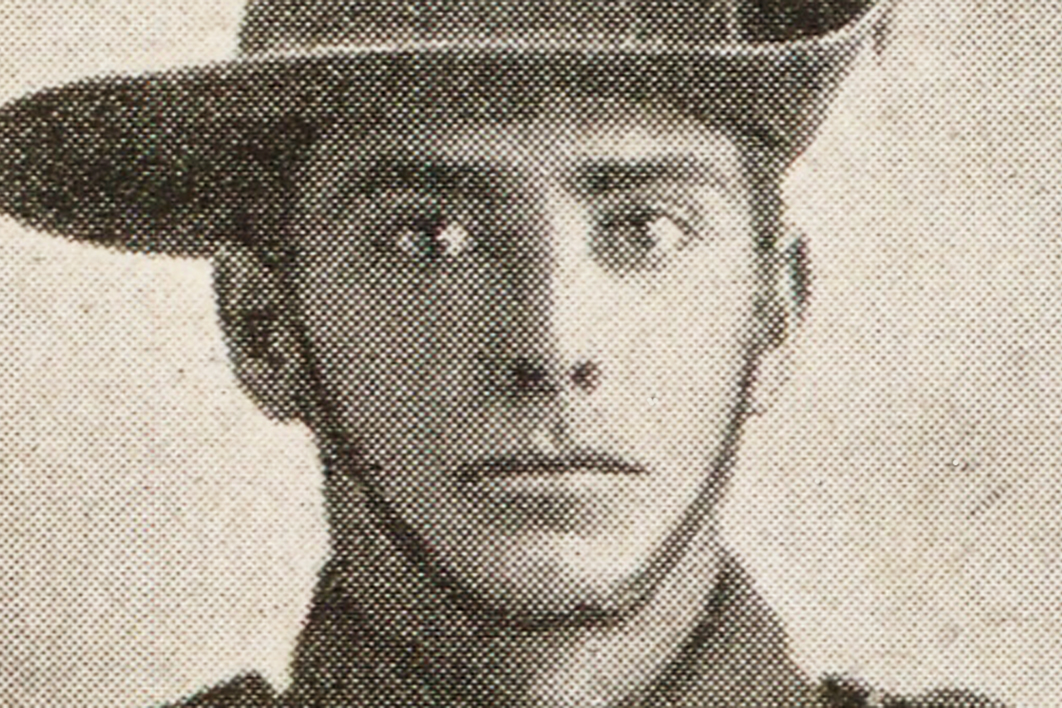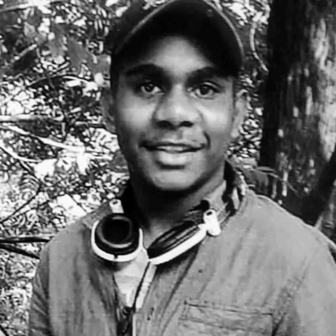Spare a thought for Frederick Sladen. After nearly four years’ service, mostly as a driver on the French battlefields, he was discharged from the Australian Imperial Force on 1 April 1919. Three weeks later, the twenty-six-year-old labourer left his home in the Northern Rivers region of New South Wales and headed for Queensland looking for work. Going inland via Casino, he crossed the border at Mt Lindsay. His arrival in Queensland had been noticed, and he was intercepted by a police constable in a hotel at Rathdowney, west of Ipswich.
Under border restriction regulations imposed in Queensland since early February, Sladen was summoned to appear in court, where, on 6 May 1919, he was sentenced to a month’s imprisonment. Across two borders to the south, the Victorian branch of the Australian Natives Association protested against this treatment of a returned soldier; Sladen nevertheless served out his time at Brisbane’s Boggo Road Gaol.
Sladen’s service to his country hadn’t counted for much for the sentencing magistrate, who believed the higher duty of deterring others weighed heavily at a time when the “public health was so gravely concerned.” In fact, Magistrate Dean would have a busy month dealing with cases involving breaches of quarantine, handing out his severest sentence, of three months, to a thirty-eight-year-old bookmaker who had tried to slip across the border at Coolangatta with his two clerks. In that case, the evidence appeared to show an intention to evade quarantine controls at Wallangarra, the centre of Queensland’s border control efforts.
The quarantine and isolation measures introduced during the Spanish flu were resented most famously by rebellious soldiers, and inconsistencies in rules across the country and disunity among the states and the Commonwealth didn’t help. Indecision by the quarantine and port authorities lay behind an alleged mutiny by returning soldiers on an overcrowded vessel, the Somali, in Adelaide. The mutiny might have consisted of little more than threats by soldiers to row themselves ashore, but it resulted in the arrest and court martial of the federal Labor member for Adelaide, Edwin “Gunner” Yates. Yates’s trial was no mere formality, but his able young counsel, Alf Foster, couldn’t save him from conviction and sixty days in detention.
In spite of cross-border transgressions and unhappy returning soldiers, the necessity of quarantine was largely accepted at the time. With a lower death rate than in neighbouring New Zealand, and well short of the catastrophic eruptions in places like India, Australia was relatively fortunate. Geographic isolation, assisted by maritime quarantine and some state-imposed restrictions, undoubtedly helped save lives.
Epidemics have patterns — they fall unevenly on populations, on regions and over time. Australia’s epidemic was no different. Having arrived late here, infections peaked more than a year after the virus had washed through most other continents in the second half of 1918. Instead, “Spanish flu” was a 1919 experience for Australia.
The epidemic’s sudden arrival in Melbourne and Sydney in January touched off a rapid increase in deaths over the next three months. Every state subsequently experienced two waves, with a short intervening period. But the first impact was spread over a number of months in different states.
In spite of the somewhat fractious political climate, all states came to be declared as quarantine areas, beginning with New South Wales and Victoria in late January. South Australia’s declaration came a week later, Queensland not until May, Western Australia in June and Tasmania, the last, in August. This administrative history maps onto the mortality calendar in 1919, with a first peak in April, a short period of decline through May and then the greater impact in the middle of the Australian winter in July. By the end of the year few deaths were being recorded.
New South Wales was the state most affected, not only in absolute numbers but per head of population. Tasmania — conventionally regarded as having survived best because of its maritime isolation — had a mortality rate no different from that of South Australia. All states except Victoria closed their borders at one time or another, despite the view of the Commonwealth director of quarantine’s view that such closures would be futile, impossible to monitor and potentially dangerous because they involved ill-equipped quarantine facilities at rural outposts like Wallangarra.
Queensland’s determination to close its borders and prosecute transgressors like Frederick Sladen didn’t save it from a mortality rate much the same as Western Australia, though still below that of Victoria and New South Wales. The states mostly relied on light policing, with only Queensland appearing to have resorted to exemplary imprisonment of a few. In Sydney, zealous policing of mask regulations in early February led to hundreds of fines.
Trouble would come later for a state government that found it had exceeded its powers, however. In November the High Court upheld an appeal by hoteliers against prosecutions for breaching trading restrictions in New South Wales. And in December a Balmain doctor who had been committed for trial in February after breaching mask regulations was awarded £150 damages by a jury that agreed he had been falsely imprisoned by a Sydney magistrate. The doctor’s lawyer was future High Court judge and Labor leader, H.V. Evatt. In the end, the states’ regulatory powers remained contentious, as did the level of police enforcement needed to protect the community.
New South Wales eased its restrictions after April, only to find the epidemic return more fiercely in winter. The postponed Peace Ball at Sydney Town Hall in early June was subsequently blamed in the press and by public health authorities for adding to the spread of infection.
Just as national figures disguise a different story in each state, so were the epidemic’s effects different across the population generally. The influenza of 1919 especially affected young men up to the age of forty, and even more so if they were working class-men living in the poorer and inner-city suburbs of Sydney. In Queensland, the greatest impact fell on Aborigines. The chief protector’s annual report for 1919 revealed that at least 298 Aboriginal people had died, making up more than a quarter of the state’s deaths from influenza and constituting a death rate up to nine times that of the general population. Western Australia’s protection regime appears to have prevented significant Aboriginal mortality in that state, but in Queensland Aboriginal workers who became sick on farms and stations were sent back to their home settlements only to pass on the virulent infection.
The differences in global, medical and political context over the span of the past century raise questions about whether we can learn much from the Spanish flu pandemic. Much was changed by its impact — in stimulus to medical research that eventually uncovered its cause to be a virus rather than bacterial, and in the development of medical and hospital systems to better cope with infectious diseases — so there’s some point in revisiting the evidence to estimate what accelerated or limited its spread. In particular, though, the fact that all states, and especially New South Wales, experienced a more damaging second phase after restrictions were lifted is an ominous reminder of the risks of impatience in the face of an epidemics. •




